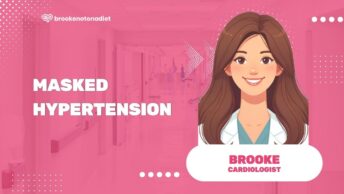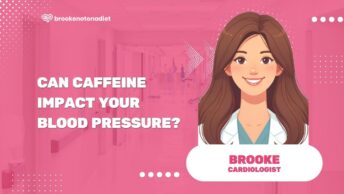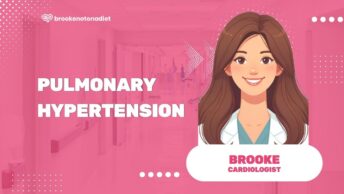If you’ve ever wondered about the inner workings of your body’s most vital organ, you’re in the right place. I’ll be diving into the fascinating world of heart anatomy and function. We’ll explore the heart’s structure, its key components, and how they work together to keep you alive and kicking.
Understanding the heart isn’t just for medical professionals. It’s essential knowledge for anyone interested in their health and well-being. So, let’s get started and unravel the mysteries of our life-sustaining powerhouse. Stay with me as I guide you through the intricate maze that is the human heart.
What is the anatomy and physiology of the heart?
Heart Walls
The heart has three distinct layers which make up its walls: the endocardium, the myocardium, and the epicardium.
- Endocardium: This is the innermost layer, lining the heart’s chambers.
- Myocardium: Right in the middle, this layer consists of cardiac muscle, responsible for the heart’s ability to contract.
- Epicardium: The outer layer, which is in contact with the sac that surrounds the heart, named the pericardium.
Heart Chambers
The heart comprises four chambers, each with a specific role in blood circulation.
- Right atrium
- Right ventricle
- Left atrium
- Left ventricle
These chambers work tirelessly, ushering oxygen-poor blood to the lungs, and oxygen-rich blood to the rest of the body.
Heart Valves
This critical heart component maintains unidirectional blood flow through the heart. We have four primary heart valves:
- Aortic valve
- Mitral valve
- Tricuspid valve
- Pulmonary valve
Blood Vessels
The heart is a hub of blood vessels, main ones are:
- Arteries: They carry oxygen-rich blood from the heart to the rest of the body.
- Veins: These vessels return oxygen-poor blood back to the heart.
- Capillaries: The smallest blood vessels, they connect arteries and veins, delivering oxygen to tissues.
Electrical Conduction System
A network of specialized heart cells, known as the conduction system, control the rhythm of the heartbeats. Key components include:
- Sinoatrial node (SA node): Considered the heart’s natural pacemaker.
- Atrioventricular node (AV node): This forms a bridge that allows electrical signals to pass from the atria to the ventricles.
Where is Your Heart Located?
Our heart sits snuggly between our lungs, in a section of the chest called the mediastinum.
What Side is Your Heart On?
Contrary to popular belief, your heart is not completely on the left side of your body but is positioned slightly to the left of your midline.
How Big is Your Heart?
On average, an adult’s heart is about the size of their clenched fist, with a length of approximately 12cm.
How Much Does Your Heart Weigh?
The weight of the heart can vary, but typically, for men it weighs between 280-340g, and for women, it’s usually between 230-280g.
| Gender | Average Heart Weight |
|---|---|
| Men | 280-340g |
| Women | 230-280g |
These components all work in harmony to control crucial aspects of our cardiovascular health, such as blood pressure. Equipment like a blood pressure monitor is widely used to check blood pressure levels, providing information that’s essential for diagnosing, treating, and preventing cardiovascular conditions. Also, don’t forget that understanding blood pressure ranges and knowing your reading will allow you to take measures for lowering blood pressure if it’s running high. For everyone’s convenience, there are blood pressure charts available online and in doctor’s offices nationwide.
How the heart pumps blood?
Having understood the basic anatomy and structure of the heart, it’s crucial now to shed light on how this incredible organ functions. The primary role of the heart is to pump blood to all parts of the body. But how does the heart accomplish this critical task?
What is Heart Rate?
The heart rate is the number of times the heart beats per minute. It’s a vital physiological measure that tells us the efficiency and health state of the heart. The average heart rate for a restful adult ranges from 60 to 100 beats per minute.
Here is a simple table to understand it better:
| Age | Average Heart rate(beats per minute) |
|---|---|
| Baby | 100 – 150 |
| Child | 70 – 100 |
| Adult | 60 – 100 |
Let’s delve deeper into the process of the blood pumping.
The Blood Pumping Process
The pumping process begins when the blood enters the right atrium from the body through the superior and inferior vena cava. Then, as the right atrium contracts, it pushes the blood into the right ventricle. The blood is then carried to the lungs through the pulmonary artery where it’s oxygenated.
The oxygen-rich blood returns to the heart and enters the left atrium. With the contraction of the left atrium, the blood moves into the left ventricle. Finally, the blood is pumped out to the rest of the body through the aorta when the left ventricle contracts. This entire sequence is repeated continuously, and it’s what we refer to as the heartbeat.
Checking and Understanding Your Heart Rate
Knowing and understanding your heart rate can provide a snapshot of your heart’s health. So, how can we check the heart rate? You can measure your heart rate manually by checking your pulse, or by using a tool called a blood pressure monitor, which usually also shows your heart rate.
Lastly, it’s also essential to know that various factors can affect your heart rate like levels of physical activity, body temperature and emotional state among others. Therefore, regular checking of blood pressure and heart rate is crucial, enabling you to stay on top of your cardiovascular health.
What things can affect your resting heart rate?
Moving on from the basic structure and function of the heart, let’s delve deeper into factors that can influence your resting heart rate. Remember that a typical resting heart rate for a healthy adult ranges from 60 to 100 beats per minute (bpm). Yet, various factors can cause your heart rate to be lower or higher.
Age and Fitness Level
To start, your age and fitness level are two major factors that influence your resting heart rate. Generally, as you age, your heart rate tends to slightly increase. Contrastingly, individuals with high fitness levels often enjoy a lower resting heart rate due to the efficiency of their cardiovascular system.
Emotions and Stress Levels
Ever noticed your heart pounding when you’re stressed or extremely emotional? That’s because emotions, stress levels, and mental status influence the heart’s rhythm. If you’re anxious or excited, your heart rate is likely to escalate.
The following table demonstrates how emotions can affect heart rate:
| Emotion | Heart Rate Effect |
|---|---|
| Anger | Increase |
| Fear | Increase |
| Excitement | Increase |
| Calm | Decrease |
Habits and Lifestyle Choices
Another major factor is the personal habits and lifestyle choices you make. Essentially, the following can significantly impact your resting heart rate:
- Smoking
- Excessive caffeine consumption
- Alcohol and drug use
- Sedentary lifestyle
- Unhealthy diet
For anyone looking to manage their heart health, one of the first steps shall include monitoring their heart rate regularly. Devices such as a blood pressure monitor are not solely limited to checking blood pressure, but also record your heart rate. Being aware of your heart rate can be a key to understanding your cardiovascular health.
Health Issues and Medications
Lastly, various health issues and certain medications can also lead to an increased or decreased heart rate. Conditions like cardiovascular disease, high cholesterol, and diabetes are associated with higher heart rates. Certain medications including beta blockers can reduce the heart rate. Always consult with a healthcare professional for personal advice concerning your heart rate.
How does the heart affect blood pressure?
Our heart plays a central role in managing blood pressure. By understanding its function, we can shed light on how it affects blood pressure levels and why maintaining a healthy heart is crucial for our health.
The Heart-Blood Pressure Connection
First, let’s delve into the mechanics of it. As the heart contracts, it pumps blood around our bodies. The force and volume of this blood being pumped create pressure within our arteries, what we refer to as blood pressure. So, essentially, the heart is the mastermind behind your blood pressure monitor readings.
Take note, however, that not only the heart’s function affects blood pressure. Other factors such as blood volume, blood vessel flexibility, and hormone levels also come into play.
This quick summary explains the correlation:
| Concept | Description |
|---|---|
| Heart’s Pumping Force | The harder the heart beats, the higher the blood pressure. |
| Heart Rate | The faster the heart beats, the higher the blood pressure (typically). |
| Blood Volume | The more blood the heart pumps, the higher the blood pressure. |
| Blood Vessel Flexibility | As blood vessels lose their elasticity, blood pressure increases. |
| Hormone Levels | Some hormones regulate blood pressure by affecting how much the heart pumps and how wide the blood vessels are. |
Remember, a balance is necessary. To illustrate, too high a blood pressure range puts us at risk for heart attack, stroke, and kidney disease, among other health problems. On the other hand, too low of a pressure range isn’t good either, as it might result in insufficient blood flow to vital organs.
Lowering and Checking Blood Pressure
Now that we’ve established my heart’s role in managing blood pressure, it’s easy to see how crucial consistent health habits are. These include maintaining a healthy lifestyle, exercising regularly, eating a heart-healthy diet, and monitoring stress levels.
It’s also imperative to regularly check blood pressure. Given that the heart is in charge of this crucial body function, any disturbance in its normal functioning might result in fluctuations in blood pressure. Regular monitoring can help you cope with the changes better.
What is a cardiovascular system?
Diving deeper into our exploration of the heart and its functions, we arrive at the concept of the cardiovascular system. It’s an intricate network that, quite literally, keeps us alive and pumping. With components like the heart, blood and blood vessels, this system plays its role silently and continuously.
The heart in this system is the core power source. Acting as the blood’s pumping engine, it pushes the life-giving fluid to every corner of our bodies. The heart’s pumping force and frequency, or heart rate, have a profound impact on our overall health, including our blood pressure levels.
Blood vessels, the arteries, veins, and capillaries, form an intricate and extensive network spanning thousands of miles in an average adult. These vessels transport blood—carrying nutrients, oxygen, hormones, and waste products—around our bodies, feeding our cells, and sustaining life. The flexibility and resilience of these vessels play a crucial part in maintaining an optimal blood pressure range.
The blood coursing in this network is the vehicle of life. It transfers oxygen from the lungs to the body tissues while ferrying carbon dioxide, a waste product, towards the lungs to be expelled. Blood also carries nutrients from the digestion system and hormones from glands throughout the body. Additionally, it ensures our body’s defenses by delivering cells to fight diseases and heal wounds. While not directly linked to a blood pressure monitor, the blood’s volume and constituents can certainly influence our blood pressure measurements.
I’d be remiss not to mention the powerful synergistic interplay between our heart rate and blood pressure. The impressive orchestration of these factors reflects in your blood pressure chart, changing with every beat of your heart. Assessing this chart and noticing shifts in your blood pressure ranges can offer invaluable insights into your cardiovascular health. Lowering blood pressure, when it’s perpetually high, becomes a priority to safeguard against potential cardiovascular issues. I can’t stress enough the importance of routinely checking your blood pressure.
What are the most common heart diseases?
With a clear understanding of the cardiovascular system and its importance, let’s delve into some of the most common heart diseases. These are health issues that affect the function and performance of your heart and blood vessels. Keeping tabs on these conditions can help you better manage your blood pressure and overall cardiovascular health.
One common heart-related issue is Coronary Artery Disease (CAD). This is a condition where the blood vessels that supply blood to your heart become hard and narrow. This is bad news for your heart as restricted blood flow could lead to heart attacks. Other conditions to look out for include heart failure, where the heart isn’t pumping blood as well as it should, and arrhythmias, where the heart rhythm is abnormal.
Another heart condition to pay attention to is high blood pressure or hypertension. Most people don’t know they have high blood pressure until they have it checked. This is why it’s integral to regularly check your blood pressure using a good quality blood pressure monitor.
There are a few numbers you need to watch when it comes to blood pressure — the systolic and diastolic values. A blood pressure chart can help you understand what these numbers mean and if they fall within the normal blood pressure ranges. Here’s a simple one to get you started :
| Blood Pressure Category | Systolic mm Hg (Upper No.) | Diastolic mm Hg (Lower No.) |
|---|---|---|
| Normal | Less than 120 | Less than 80 |
| Elevated | 120 – 129 | Less than 80 |
| Hypertension Stage 1 | 130 – 139 | 80 – 89 |
| Hypertension Stage 2 | 140 or higher | 90 or higher |
| Hypertensive Crisis | Higher than 180 | Higher than 120 |
If you find your numbers creeping up towards the hypertension range, don’t panic. There are steps you can take to start lowering your blood pressure levels, like:
- Reducing salt intake
- Keeping alcohol and caffeine intake to a minimum
- Regular exercise
- Maintaining a healthy weight
- Incorporating heart-healthy foods into your diet
How are heart diseases diagnosed?
When we talk about heart disease diagnosis, blood pressure monitoring plays an indispensable role. Doctors often start by checking your blood pressure as a quick, non-invasive method of determining potential heart-related troubles.
Diagnostic Techniques
Multiple diagnostic tests are included in the set of tools that medical professionals utilize when diagnosing heart diseases. Some of these are:
- Physical examination and patient history: It’s a cornerstone in every diagnosis, not just those related to heart diseases.
- Electrocardiogram (EKG): It’s one of the most common tests used to measure the electrical activity of the heart.
- Holter monitoring: A portable device for continuous monitoring of diverse electrical activity of the cardiovascular system over a specific period. Useful for detecting heart conditions that aren’t found during a routine check-up.
- Echocardiogram: This is a non-invasive test that uses sound waves to produce images of the heart’s size, structure, and motion.
Remember that diagnosing heart disease isn’t a one-off check, but a consistent monitoring process. As a recommendation, I’d suggest checking your blood pressure regularly and maintaining a healthy lifestyle to ensure heart health.
What treatments option are available for heart diseases?
In this day and age, a variety of treatment options are available for heart conditions. These span lifestyle modifications, medication, and surgical procedures. The type of treatment largely depends on the person’s condition and overall health.
How Can I Keep My Heart Healthy?
Keeping your heart healthy involves a mix of key factors. Primary among them are lifestyle choices that reduce the risk of developing heart conditions and help maintain optimal blood pressure.
- Regular Exercise: A simple activity like walking 30 minutes a day can significantly improve heart health. For those already active, I’d advise varying your workout routine to include a combination of cardio and strength training exercises.
- Well-balanced Diet: Incorporating a diet rich in fruits, vegetables, whole grains, lean protein, and low-fat dairy products can help to keep your heart in good shape. Avoiding processed foods and reducing salt, trans fat, and cholesterol intake can also lower blood pressure.
- Stress Management: Stress contributes significantly to high blood pressure. Implementing relaxation techniques like yoga, meditation, and deep breathing exercises is beneficial for heart health.
- Regular Check-ups: Consistent monitoring of blood pressure using a blood pressure monitor is crucial. Understanding blood pressure ranges allows you to take swift corrective measures if your blood pressure starts to climb. This could be via lifestyle changes or medication.
How can heart diseases be prevented?
Unhealthy habits can endanger your heart. But the good news is, these can be changed any time you’re ready. Yes, it’s never too late to benefit from lifestyle improvements. Your heart health isn’t only about dodging illness and disease. It’s about living and leading a full, productive, and active lifestyle. Let’s dig into some of the most effective measures to prevent heart diseases.
Stay Active and Maintain a Healthy Weight
Exercise can do wonders for your heart health. It helps lower blood pressure by enhancing the elasticity of blood vessels, thereby improving the flow of blood. Exercise is also known to keep body weight in check and reduce stress. Here’s a basic exercise guideline you could follow:
- Minimum 30 minutes of moderate intensity exercise at least 5 times a week.
- The exercise could be a brisk walk, cycling, swimming, among others.
Use a blood pressure monitor to routinely check your vitals and heart rate after exercising. Don’t have a monitor at home? You could also use a blood pressure chart to understand your readings.
Healthy Diet – The Heart’s Best Friend
Nothing affects your heart health more than what you eat. A balanced diet filled with whole grains, fruits, vegetables, lean proteins, and fats can help lowering blood pressure and maintain heart health. Avoid processed foods, excessive salt intake, and limit alcohol and caffeine.
| Food Type | Foods To Include | Foods To Avoid |
|---|---|---|
| Whole Grains | Brown Rice, Quinoa, Oats | White Bread, Pastries |
| Fruits/Vegetables | Apples, Berries, Leafy Greens | Fruit Juices, Canned Vegetables |
| Proteins/Fats | Lean Meat, Fish, Avocados | Red Meat, Butter |
Stress Management
Stress and anxiety can elevate your blood pressure ranges unusually. Regular exercise, plenty of sleep, and relaxation techniques like meditation can help tame your stress levels.
No Smoking, Limited Alcohol
Smoking is a big no-no for heart health. Not only does it raise your blood pressure, but the carbon monoxide in the smoke also lowers the amount of oxygen your blood can carry. Similarly, while it might be tempting to unwind with a glass of wine or beer after a long day, remember that excessive alcohol can increase your blood pressure.
What are the risk factors for heart diseases?
Heart disease affects people of different demographics differently. It’s not a be-all-end-all diagnosis. Rather it’s a stirring pot with various ingredients such as age, sex, and overall health contributing to its makeup. Let’s dissect the peculiar patterns these factors present in different segments of the population.
How is Heart Disease in Women Different from Men?
Heart disease remains unprejudiced, striking both men and women in their path. That said, its appearance might alter depending on whether you’re male or female. Unfortunately, Heart disease is the leading cause of death for women in the United States, marking its significance in women’s health.
For women, heart disease symptoms can often be stealthier than their male counterparts. Classic indications like chest pain aren’t always present. Instead, women might experience discomfort in the neck, shoulder, upper back, or abdomen. Shortness of breath, right arm pain, nausea or vomiting, sweating, lightheadedness, and unusual fatigue are also common.
Moreover, risk factors also differ. Factors like menopause, mental stress and depression, diabetes, smoking, and an inactive lifestyle often play a more substantial role in developing heart disease for women.
What are the Most Common Heart Diseases in Children?
I know it’s hard to fathom, but children aren’t immune to heart diseases either. While their young age might protect them from ailments like coronary artery disease, other conditions can indeed play a role. Congenital heart disease—a condition present at birth—is the most common form of heart disease in children. It includes a range of abnormalities affecting the heart’s structure.
Another prominent heart condition among children is rheumatic heart disease. It’s caused by untreated or poorly treated strep throat or scarlet fever infections, leading to heart valve damage. Early detection and prompt treatment of these infections play a crucial role in preventing this disease.
How does Heart Disease Affect the Elderly?
As the body ages, so does the heart, opening the doorway to a slew of potential health problems. The elderly population is more susceptible to heart diseases largely due to the natural aging process and an increased likelihood of health conditions like high blood pressure and diabetes.
Frequent culprits in this age bracket include coronary artery disease and heart failure. The importance of regular check-ups and maintaining a heart-healthy regimen, including adequate exercise, a balanced diet, and prescribed medication, cannot be overstressed for the elderly population.
What Age Group is Most Affected by Heart Disease?
Heart disease is often a byproduct of age and lifestyle choices. Statistically, the risk substantially amplifies for men older than 45 and women older than 55. However, it’s important to remember that prevention is key. Regularly checking your blood pressure, maintaining a healthy lifestyle, and regularly monitoring blood pressure ranges with the help of a blood pressure monitor can significantly help in lowering blood pressure and mitigating heart disease risk—even for the most susceptible age groups.
Do note, this doesn’t mean the younger population is in the clear. Unhealthy lifestyle choices can expedite the onset of heart diseases, irrespective of age. That being said, maintaining a healthy heart is very much a lifelong commitment, one that could significantly improve your quality of life.
What should I ask my doctor about my heart?
Navigating a conversation concerning your heart health with your doctor can be intimidating especially without the right set of questions. A good starting point, in my experience, is understanding your blood pressure. An acronym that might help is B.R.A.V.E, which stands for Blood pressure, Risk factors, Activity, Vegetables, and Education.
Risk Factors
Your risk level influences your prognosis significantly. Known risk factors for heart disease include:
- Age
- Family history
- Smoking
- High cholesterol
- High blood pressure
- Obesity
- Diabetes
- Sedentary lifestyle
Activity and a Balanced Diet
Regular physical activity complements good nutritional habits in maintaining good heart health. Your doctor can offer tailored advice on what types of activity best suit your lifestyle and existing health conditions.
When discussing your diet, particularly the supermarket department abundant with lush greens – the vegetables – don’t shy away from asking which nutrients could benefit you.
Education
The pillar that anchors all information is education. It’s integral to ask your doctor for resources, websites, or local support groups that can help you delve deeper into understanding your heart health.
Final words
We’ve journeyed through heart anatomy and its function, understanding how crucial it is to our overall health. We’ve dissected the risk factors for heart diseases, understanding how they vary based on age, sex, and health status. We’ve shed light on the often overlooked significance of heart disease in women’s health, as well as the most common heart diseases in children and their impact on the elderly.
We’ve also reiterated the fact that heart disease risk does increase with age, but that doesn’t make prevention any less vital. We’ve given you the tools to engage in informed discussions with your doctor about your heart health, and have emphasized the importance of a balanced diet, regular physical activity, and education in maintaining a healthy heart. So let’s take these insights to heart, and make every heartbeat count.







